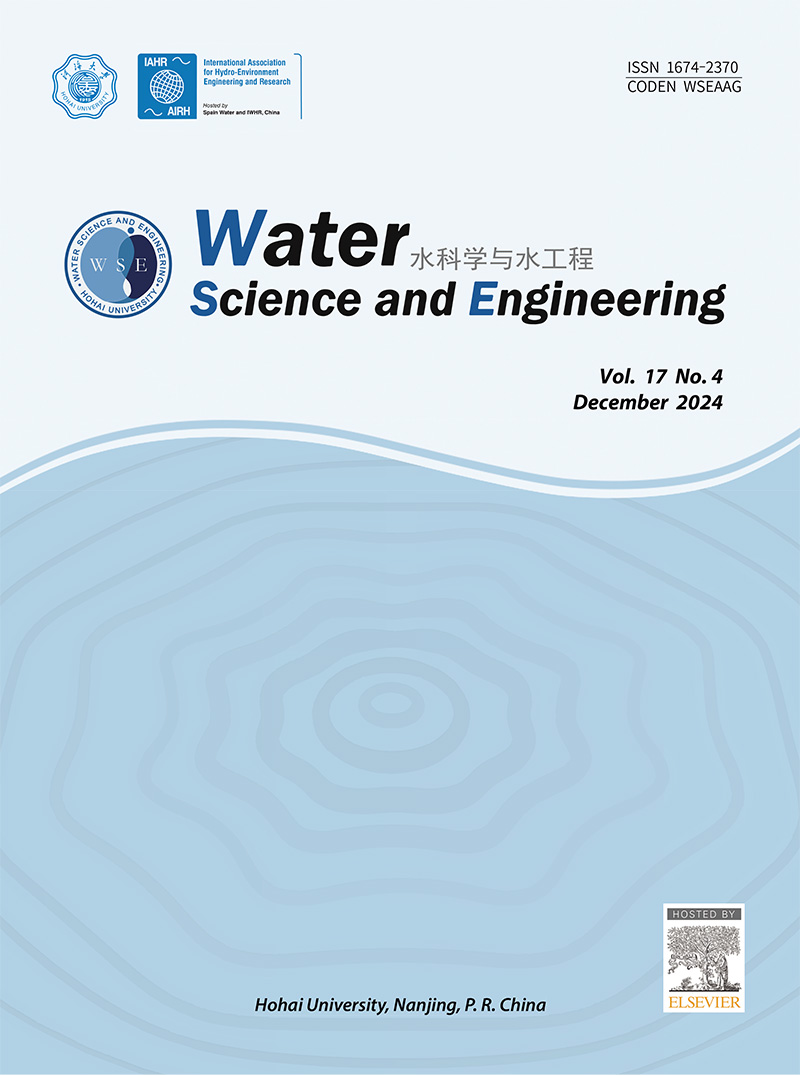Prediction models for scour depth around circular compound bridge piers
IF 4.3
Q1 WATER RESOURCES
引用次数: 0
Abstract
Scour around bridge pier foundations is a complex phenomenon that can threaten structural stability. Accurate prediction of scour depth around compound piers remains challenging for bridge engineers. This study investigated the effect of foundation elevation on scour around compound piers and developed reliable scour depth prediction models for economical foundation design. Experiments were conducted under clear-water conditions using two circular piers: (1) a uniform pier (with a diameter of D) and (2) a compound pier consisting of a uniform pier resting on a circular foundation (with a foundation diameter (Df) of 2D) positioned at various elevations (Z) relative to the channel bed. Results showed that foundation elevation significantly affected scour depth. Foundations at or below the bed (Z/D ≥ 0) reduced scour, while those projecting into the flow field (Z/D < 0) increased scour. The optimal foundation elevation was found to be 0.1D below the bed level, yielding a 57% reduction in scour depth compared to the uniform pier due to its shielding effect against downflow and horseshoe vortices. In addition, regression, artificial neural network (ANN), and M5 model tree models were developed using experimental data from this and previous studies. The M5 model outperformed the traditional HEC-18 equation, regression, and ANN models, with a coefficient of determination greater than 0.85. Sensitivity analysis indicated that flow depth, foundation elevation, and diameter significantly influenced scour depth prediction, whereas sediment size had a lesser impact.
圆形复合桥墩周围冲刷深度预测模型
桥墩基础周围冲刷是一种复杂的现象,会威胁到结构的稳定。复合桥墩周围冲刷深度的准确预测一直是桥梁工程师面临的挑战。研究了基础高程对复合桥墩周围冲刷的影响,建立了可靠的冲刷深度预测模型,为经济基础设计提供依据。实验在清水条件下使用两个圆形墩进行:(1)均匀墩(直径为D)和(2)复合墩,由均匀墩组成,位于圆形基础上(基础直径(Df)为2D),相对于河床的不同高程(Z)。结果表明,地基高程对冲刷深度有显著影响。床内及床下地基(Z/D≥0)冲刷减小,而凸出流场的地基(Z/D < 0)冲刷增大。研究发现,最优基础标高在河床以下0.1D,由于其对下流和马蹄涡的屏蔽作用,与均匀墩相比,冲刷深度减少了57%。此外,利用本研究和前人研究的实验数据,建立了回归、人工神经网络(ANN)和M5模型树模型。M5模型优于传统的HEC-18方程、回归模型和人工神经网络模型,决定系数大于0.85。敏感性分析表明,水流深度、基础高程和直径对冲刷深度预测有显著影响,而泥沙粒径对冲刷深度预测的影响较小。
本文章由计算机程序翻译,如有差异,请以英文原文为准。
求助全文
约1分钟内获得全文
求助全文
来源期刊

Water science and engineering
WATER RESOURCES-
CiteScore
6.60
自引率
5.00%
发文量
573
审稿时长
50 weeks
期刊介绍:
Water Science and Engineering journal is an international, peer-reviewed research publication covering new concepts, theories, methods, and techniques related to water issues. The journal aims to publish research that helps advance the theoretical and practical understanding of water resources, aquatic environment, aquatic ecology, and water engineering, with emphases placed on the innovation and applicability of science and technology in large-scale hydropower project construction, large river and lake regulation, inter-basin water transfer, hydroelectric energy development, ecological restoration, the development of new materials, and sustainable utilization of water resources.
 求助内容:
求助内容: 应助结果提醒方式:
应助结果提醒方式:


